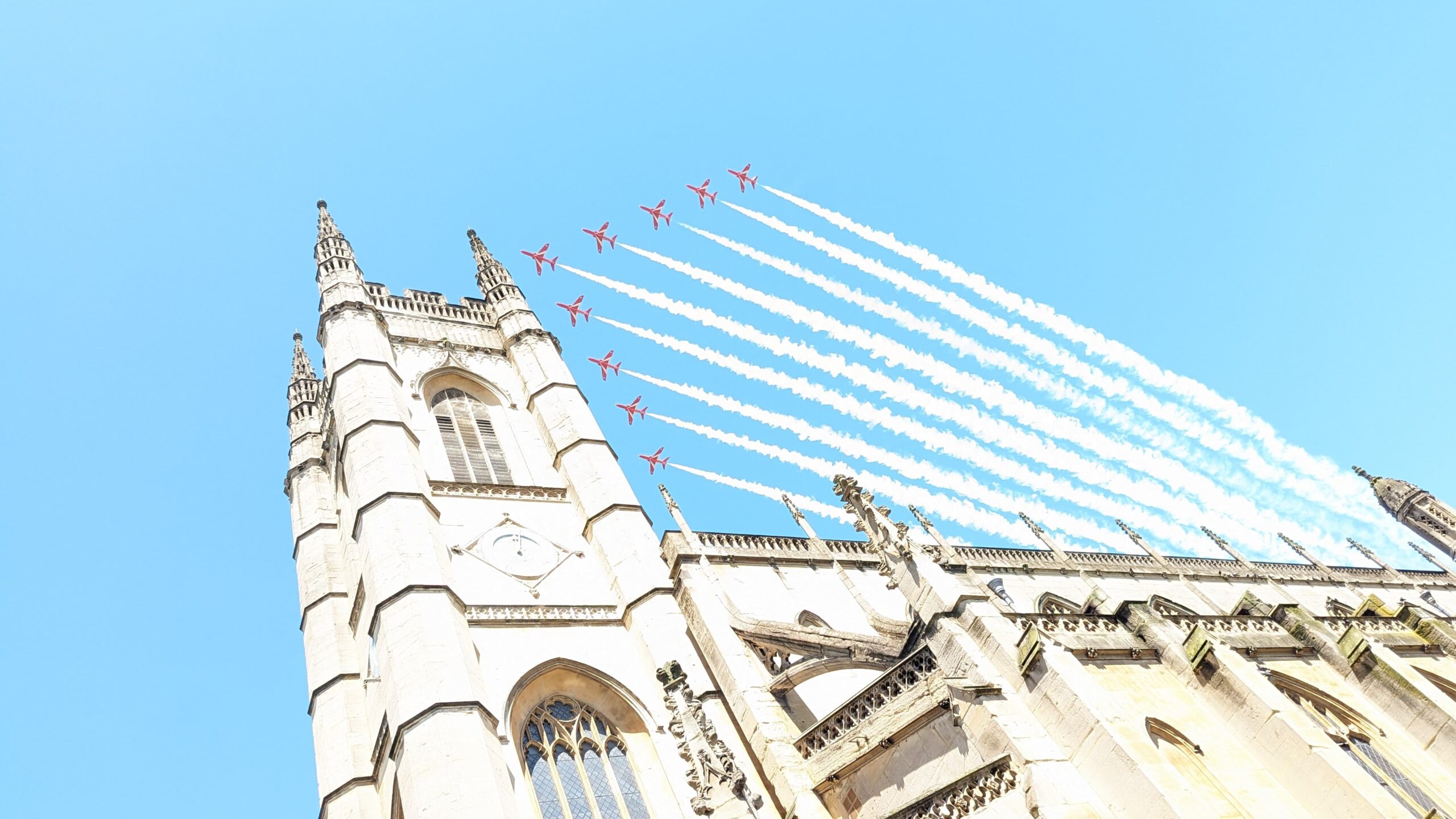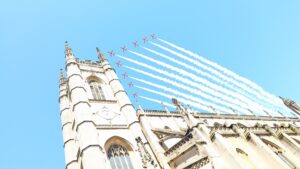

04.10.2024
St Luke’s 200th Anniversary
Why build a church? It may seem an odd question, but it is a real question. Why build a church? After all, we repeatedly hear that Church is more than a building, it is a community. I would want to go further and suggest that it is a community, a local gathering of the body of Christ, which gathers for worship, is nourished in worship and then is sent out from worship.

(Photo by Anna Stamenova)
So perhaps here is a clue. Worship is at the heart of our church life – and if worship then we need a place to do so. Yes, it could be under a shady tree or in a school hall or someone’s front room. But churches have been built since the very earliest centuries of Christian life. The New Testament paints a picture of people meeting for worship in the homes of the wealthy, to avoid persecution and to address local need, but there was also much diversity. We know that Christians met in inns, bath houses, cemeteries and warehouses.
Once Christian belief, worship and practice could happen in peace with stability, churches began to symbolize Christianity’s incarnate faith. God is made man in Jesus Christ, and God is made present and tangible, incarnate, in buildings. Sacred Space begins to spread. We can all sense when we go into a church, in town or country, that this is a prayed-in, lived-in expression of faith. The very stones seem to breathe in and out with the prayers of the faithful.
As time passed this sense of sacred space began to become nuanced. If this is a godly place, people argued, then surely, we need to adorn it with the sort of beauty we ascribe to God. Our stunning medieval cathedrals with their fine craftsmanship in stone and glass, vaulted arches and spires speak of the grandeur we ascribe to God, of the desire to stretch out our bodies to become as close to God as we can. Tangible, incarnate pointers to the intangible, transcendent God. Art, music, poetry follow in this same desire to speak of God’s truth and beauty within a human horizon.
This was a well-founded statement of theology by the time St Luke’s was built 200 years ago. But context plays a big part too. After the Battle of Waterloo, there was a stirring of nationalism coupled with a considerable population growth in Chelsea as London spread rapidly, making outlying villages like Chelsea suburban parts of a greater city. So, when parliament began a campaign to increase the provision of church buildings for the new urban population, St Luke’s was one of the very first to gain traction and come to completion.
Except of course that a church building is never quite completed. If, within its sacred space, a lively, praying, serving community is to be found, then there will always need to be development. Electricity replacing candles, organs replacing bands, heating replacing the need for layers of clothing, toilets, kitchens, sound systems, web sites, contactless card readers and so one could continue.
Our buildings are never static too because of the need not only to worship, but to invite, to sustain and to send out in care and mission. The café, the children and youth work, the Autumn and Lent talks, the night shelter, the choirs all speak of our continued development in faith which will go on long after we have celebrated 200 years.
Here, in the next few years, things will change, as we seek to serve God in a changing context, but the need for a building, to incarnate our faith, to glorify God, to serve our parishioners and God’s world will surely endure. Happy 200th Birthday, St Luke’s.
Revd Prebendary Dr Brian Leathard